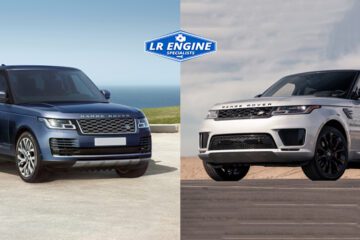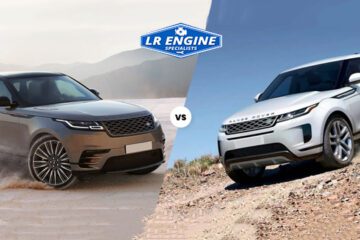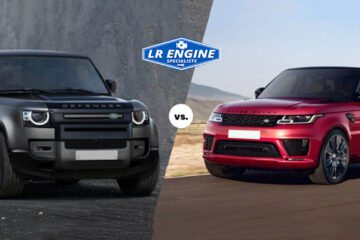When driving through harsh winter landscapes, selecting the right engine for your Range Rover can make all the difference. The snowy season demands power, precision, and an advanced traction system. Two of the most popular engine choices are the Range Rover 3.0 engine vs the Range Rover 5.0 engine snow performance, particularly in petrol and diesel variants. Understanding how these engines behave in snow is essential for performance enthusiasts and everyday drivers who value safety.
Understanding the Range Rover Engine Lineup
The Range Rover has long been a hallmark of luxury and off-road prowess. Over the years, Land Rover has introduced a range of robust engine options, with the 3.0L and 5.0L petrol and diesel engines exceptional for their performance. The 3.0L, available in both petrol and diesel versions, offers a smooth fusion of power and efficiency, exemplary for those who want performance without sacrifice. Meanwhile, the 5.0L V8 petrol engine is a true beast, designed for drivers who wish for exhilarating power and ideal performance. In snowy conditions, where traction and torque control are vital, the specific characteristics of each engine can make a big difference in how the vehicle tackles.
The Technical Specifications in Snow Context
Actual snowy terrain performance begins with understanding the technical specs. The discussion of the Range Rover 3.0 engine vs the Range Rover 5.0 engine snow performance must start with torque output, horsepower, and responsiveness. The 3.0L diesel engine produces high torque at low RPMs, which is especially advantageous for traction in snow. On the other hand, the 5.0L petrol engine delivers raw horsepower that can either enable or overwhelm in snowy conditions, depending on how it’s managed.
Driving in Snow: Torque vs Horsepower
Snow driving is not just about speed; it’s about control. This is where torque becomes more invaluable than horsepower. The 3.0L diesel’s high torque, especially when coupled with advanced traction control systems, gives it a clear edge. You get effortless acceleration and a better grip on slippery surfaces. In contrast, the 5.0L petrol engine’s brute force can be tricky to manage unless managed with skill. The higher power output can result in wheelspin, reducing traction if not completely mitigated by the vehicle’s traction systems.
Advanced Terrain Response System Compatibility
Both engines are equipped with Range Rover’s advanced Terrain Response systems. These systems adjust throttle response, gear ratios, and traction control to suit snow and ice. However, how the engine provides power to this system impacts overall performance. The Range Rover 3.0 engine vs Range Rover 5.0 engine snow performance analysis shows that the 3.0L’s gradual power delivery combines more smoothly with terrain response modes. The 5.0L, while responsive, sometimes needs a gentler touch from the driver to avoid forceful outputs that may overwhelm icy paths.
Fuel Efficiency and Winter Driving
Another basic factor is fuel efficiency. During winter, idling time increases, and engines work harder. The 3.0L diesel engine excels in this area, offering superior mileage without sacrificing power. The advantage is fewer pit stops and an extended range, specifically in low temperatures. The 5.0L petrol engine, in comparison, consumes more fuel, particularly in stop-start traffic and heavy snow. This can be a notable drawback for those using their Range Rover for daily commutes or long-distance winter travel.
Cold Starts and Engine Reliability
Cold starts are a typical winter problem. The 3.0L diesel engine, with the latest glow plug technology, performs durably even in sub-zero temperatures. The 5.0L petrol engine also starts efficiently but tends to utilize more energy and fuel in the process. When assessing Range Rover 3.0 engine vs Range Rover 5.0 engine snow performance, diesel engines generally warm up faster and maintain ideal operating temperature better in colder climates, enhancing efficiency and engine longevity.
Suspension and Weight Distribution Matters
The engine type also affects vehicle weight distribution. The 5.0L engine is heavier and can sometimes result in understeering in snowy turns. The 3.0L, being lighter, allows for more balanced tackling. Paired with air suspension systems, this makes the diesel 3.0L model better suited for precise maneuvering in snow-laden terrains. While the 5.0L’s extra weight can support traction in straight-line snowy climbs, it can become a liability on twisty, icy roads.
Towing and Load Handling in Snow
If you’re using your Range Rover for towing in snowy conditions, engine selection becomes vital. The 5.0L petrol engine delivers extraordinary towing power, exemplary for pulling trailers or heavy loads uphill in snow. However, the 3.0L diesel’s high torque delivers a more controlled towing experience, particularly on icy declines or slick roads. The Range Rover 3.0 engine vs Range Rover 5.0 engine snow performance difference is clear when control and stability are more vital than brute strength.
Snow Mode Driving Experience
With snow mode on, the throttle feels less responsive, and gear shifts are made meticulously to maintain control on icy terrain. The 3.0L engine adjusts beautifully to this mode, especially the diesel models. It encourages effortless driving with fewer energetic torque spikes. Conversely, the 5.0L engine, while delivering power, can feel a bit abrupt if the driver isn’t familiar with its quick responsiveness. Learning curve aside, the 5.0L can still offer a thrilling but stable drive in snow if tackled skillfully.
Long-Term Maintenance in Winter Conditions
Snow and salt can accelerate wear and tear, making engine reliability a priority. The 3.0L diesel engines normally have lower RPM operations, causing less strain over time. This gives them a benefit in longevity when frequently driven in cold weather. The 5.0L petrol, while potent, needs more frequent maintenance due to higher performance outputs and more complex internal parts. The expense of upkeep during winter can thus be a deciding factor in selecting between these two.
User Feedback and Real-World Experience
Owners of the 3.0L diesel engine persistently report high satisfaction when driving in snow. Many admire the predictable power delivery and the way it couples with Range Rover’s AWD system. In comparison, drivers of the 5.0L petrol engine often appreciate its responsiveness and luxury feel but acknowledge the demand for careful throttle management on ice. These testimonials show the tangible differences in Range Rover 3.0 engine vs Range Rover 5.0 engine snow performance, highlighting driver preferences based on landscapes and driving style.
Snow Trail Adventures: Engine Comparison
For those who love winter trails and snowy expeditions, the 3.0L diesel engine offers a balanced fusion of efficiency, torque, and range. It allows longer trips without frequent refueling and delivers steady traction. The 5.0L petrol engine is better suited for short, powerful bursts of driving like hill climbs and deep snow recovery. But it consumes more fuel and may need more finesse in challenging snow conditions.
Engine Response During Emergency Maneuvers
Emergency braking or evasive steering on snow needs an instant but manageable engine response. The 3.0L’s effortless acceleration curve enables drivers to retain better control. The 5.0L’s sharper output, while advantageous in dry conditions, may reduce stability if not adjusted correctly on slippery roads. Hence, the Range Rover 3.0 engine vs Range Rover 5.0 engine snow performance difference becomes vital during high-stress moments.
Conclusion:
Both the 3.0L and 5.0L engines have their standards, but snow performance is about control, stability, and predictability. The Range Rover 3.0 engine vs Range Rover 5.0 engine snow performance comparison shows that the 3.0L diesel engine consistently provides better traction, superior fuel economy, and improved driver confidence in snow. While the 5.0L petrol engine offers power and fame, it demands a more experienced hand for perfect snow driving.
Ultimately, if your winter journeys include long distances, mountainous terrains, or frequent snow driving, the 3.0L diesel is your perfect bet. For those who prioritize high performance and are willing to adjust their driving style, the 5.0L petrol can still excel on snow-laden roads.
For professional advice and high-end engine services, trust LR Engine Specialists, where performance meets precision for your Range Rover in all seasons.
FAQs:
Which Range Rover engine is better for snowy conditions: 3.0L or 5.0L?
The 3.0L diesel engine offers better torque, fuel economy, and effortless traction in snow. The 5.0L petrol is powerful but needs careful handling on icy roads.
Does the 5.0L engine consume more fuel in winter?
Yes, the 5.0L petrol engine consumes notably more fuel, especially during cold starts and heavy snow driving. The 3.0L diesel is more efficient in winter conditions.
Is the Terrain Response system effective with both engines?
Yes, but it couples more smoothly with the 3.0L’s progressive power delivery. The 5.0L’s responsiveness can challenge less experienced snow drivers.
How do the engines perform in emergency snow maneuvers?
The 3.0L engine allows controlled responses and better stability under stress. The 5.0L may over-deliver power, needing more skill to manage safely.
Which engine is more reliable in extreme cold?
The 3.0L diesel, with modern glow plug systems, tackles cold starts efficiently. The 5.0L petrol performs well too, but uses more fuel and energy in cold starts.


